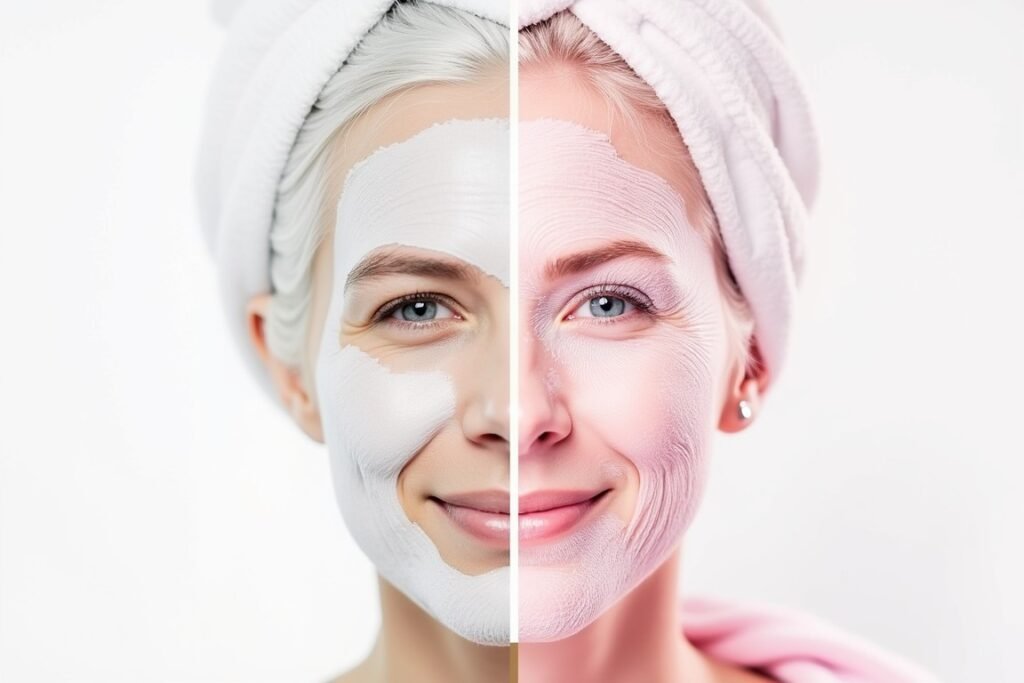Imagine standing at the top of a snowy mountain, ready to ski down, surrounded by breathtaking scenery. Yet instead of enjoying the moment, you feel something is wrong. The cold seeps through your outfit, and uncomfortable clothing restricts your movements. That’s a scenario every skier wants to avoid.
That’s why the right ski outfit is not only a matter of comfort but also of safety. Properly chosen clothing will allow you to fully enjoy winter activities, no matter the weather conditions or the intensity of your ride.
In this article, you’ll discover how to avoid the most common mistakes when choosing ski wear and how to pay attention to every detail so your adventure on the slopes becomes unforgettable. Learn how the right outfit can transform your skiing experience and make every moment in the snow a pleasure. Get ready for a fascinating journey into the world of ski fashion, where functionality meets style, and every decision matters.
Key information
- Odpowiedni strój narciarski jest kluczowy dla bezpieczeństwa, komfortu i wydajności na stoku.
- Zastosowanie systemu trzech warstw: odprowadzającej wilgoć, izolującej i wodoodpornej jest niezbędne do ochrony przed warunkami atmosferycznymi.
- Wybór materiałów syntetycznych lub z wełny merino zapewnia lepsze zarządzanie wilgocią niż bawełna.
- Dostosowanie stroju do warunków pogodowych i poziomu aktywności zwiększa komfort i bezpieczeństwo.
- Unikanie powszechnych błędów, takich jak noszenie bawełny czy niedopasowane rozmiary, poprawia doświadczenie narciarskie.
Contents
Why is the outfit for skiing so important?
Choosing the right skiing outfit is crucial not only for style but also for safety, comfort, and performance. Wearing appropriate attire can greatly impact your skiing experience. Here’s why:
- Safety: Skiing involves navigating through cold temperatures and potentially hazardous conditions. A proper outfit, with layers and thermal insulation, protects against hypothermia and frostbite.
- Comfort: Skiing demands physical exertion, and wearing moisture-wicking materials helps in managing sweat, preventing chills, and ensuring sustained comfort throughout the day.
- Performance: The right gear, including flexible outerwear and supportive boots, enhances mobility and control, allowing for better technique and agility on the slopes.
In essence, a well-chosen skiing outfit is integral to maximizing your enjoyment and safety on the slopes.
General rules – universal clothing tips for everyone
When it comes to dressing for skiing, there are universal guidelines that apply to everyone, regardless of gender. Here are essential tips to help you choose the right ski clothing for a comfortable and safe experience on the slopes:
- Layering: Adopt a three-layer system: a moisture-wicking base layer, an insulating mid-layer, and a weatherproof outer layer. This combination ensures warmth, breathability, and protection from the elements.
- Material Selection: Opt for synthetic or merino wool base layers as they efficiently manage moisture and provide warmth. Avoid cotton, as it retains moisture and can lead to chills.
- Fit: Ensure that clothing fits well without being too tight or too loose. A snug fit enhances mobility and retains heat, while ensuring comfort.
- Waterproof and Breathable: Choose outerwear with waterproof and breathable fabrics to stay dry and comfortable. Look for garments with high waterproof ratings (at least 10,000 mm) and breathability ratings (at least 10,000 g/m²) for optimal performance.
- Ventilation: Select jackets and pants with ventilation zippers to regulate temperature during intense physical activity.
- Durability: Invest in high-quality clothing that can withstand wear and tear. Reinforced areas, such as knees and elbows, are beneficial for longevity.
- Visibility: Consider clothing with bright colors or reflective elements to enhance visibility in low-light conditions.
By following these universal tips, you can ensure that your ski attire meets the demands of the sport while keeping you comfortable and protected.

How to dress for skiing as a woman
When dressing for skiing as a woman, attention to detail in both function and style is essential. Here are specific clothing recommendations to ensure you are well-prepared for the slopes:
- Base Layer: Opt for a thermal set made from merino wool or synthetic fabric. These materials provide excellent moisture management and warmth.
- Mid Layer: A fleece jacket or insulated vest offers extra warmth. Look for styles that are slim-fitting but allow for natural movement.
- Outer Layer: Choose a waterproof and windproof ski jacket with a high collar and adjustable hood. Pair it with matching ski pants that have reinforced knees and cuffs.
- Fit and Style: Embrace ski wear designed for women, which often features a tapered waist and flattering cuts. Consider vibrant colors or patterns that suit your personal style.
- Accessories: Select insulated gloves or mittens, a helmet-compatible hat or headband, and a neck gaiter or balaclava for added protection against the cold.
- Footwear: Wear moisture-wicking ski socks and ensure your ski boots fit snugly for optimal performance and comfort.
By carefully selecting each clothing item, you can combine practicality with elegance, ensuring both comfort and confidence while skiing.

How to dress for skiing as a man
When preparing to hit the slopes, men’s skiing attire should prioritize both functionality and style. Here are some essential clothing tips designed specifically for men to ensure a comfortable and enjoyable experience:
- Base Layer: Start with a moisture-wicking thermal made from merino wool or synthetic materials. This layer helps regulate body temperature and keep you dry.
- Mid Layer: Opt for an insulated jacket or fleece pullover. These layers provide additional warmth while allowing flexibility for active movement.
- Outer Layer: Select a durable, waterproof, and windproof ski jacket with features such as a powder skirt and adjustable cuffs. Pair with ski pants that offer reinforced knees and ventilation zips for comfort and protection.
- Fit and Style: Choose clothing that fits well, providing a balance between snugness and mobility. Dark, neutral colors or bold patterns can be selected according to personal taste.
- Accessories: Protect your extremities with insulated gloves, a helmet-compatible beanie, and a neck gaiter or balaclava. These pieces are crucial for warmth and safety.
- Footwear: Wear high-quality ski socks that manage moisture and ensure ski boots are properly fitted for maximum support and comfort.
By thoughtfully layering these pieces, you can maintain warmth and style, allowing you to focus fully on the exhilaration of skiing.
Skiing outfit and the weather
When preparing for a day on the slopes, it’s crucial to consider the weather conditions, as they significantly influence your clothing choices. Different temperatures and precipitation levels require specific adjustments to ensure comfort and safety. Here are some tips on how to tailor your skiing outfit according to the weather:
- Cold and Snowy: Layer up with a thicker mid-layer, such as a down jacket, and ensure your outer layer is highly insulated and waterproof. Don’t forget to wear thermal leggings under your ski pants for added warmth.
- Mild and Sunny: Opt for lighter base and mid-layers to prevent overheating. Choose outer layers with ventilation zips to allow airflow, and remember to apply sunscreen to exposed skin.
- Windy Conditions: Prioritize windproof outer layers to reduce windchill. A balaclava or neck gaiter can help protect your face and neck from harsh winds.
- Wet and Rainy: Ensure all outer layers are waterproof, paying attention to seams and zippers. A waterproof helmet cover and goggles with an anti-fog coating can enhance visibility and comfort.
By tailoring your skiing attire to the specific weather conditions, you can maintain optimal comfort and performance on the slopes.
Match your outfit to activity level and conditions
Dressing appropriately for your skiing activity level and the environmental conditions is crucial for both comfort and performance.
High-intensity skiing, such as aggressive downhill racing or freestyle skiing, generates more body heat. In these cases, it’s best to wear moisture-wicking base layers and breathable mid-layers to manage perspiration effectively.
Conversely, for leisurely skiing or beginners, who may spend more time on lifts or taking breaks, thicker insulation layers are advisable to maintain warmth.
Below you’ll find a comparison table to illustrate how clothing choices differ based on activity levels:
| Activity Level | Base Layer | Mid Layer | Outer Layer |
|---|---|---|---|
| High-Intensity | Lightweight, moisture-wicking | Breathable fleece or thin down | Ventilated, waterproof shell |
| Leisurely/Beginner | Thermal, moisture-wicking | Thick fleece or insulated jacket | Insulated, waterproof shell |
By adjusting your outfit to align with your skiing activity level and surrounding conditions, you enhance your skiing experience, ensuring that you stay warm, dry, and comfortable on the slopes.
Common outfit mistakes
Common outfit mistakes can lead to discomfort or even safety concerns on the slopes. Identifying these errors early can help you avoid them. Here are some frequent missteps along with solutions:
- Wearing Cotton Layers: Cotton retains moisture, leading to chills. Solution: Opt for synthetic or wool base layers that wick moisture away.
- Improper Sizing: Too tight or too loose clothing can restrict movement or let cold air in. Solution: Choose well-fitting gear that allows for layering without being restrictive.
- Ignoring Weather Conditions: Dressing too light or heavy for the weather can affect comfort. Solution: Check the forecast and adjust layers accordingly.
- Neglecting Head and Neck Protection: Losing heat through the head and neck can leave you cold. Solution: Wear a helmet and a neck gaiter or balaclava.
- Inadequate Footwear: Non-waterproof boots can lead to wet, cold feet. Solution: Invest in quality waterproof ski boots with proper insulation.
By avoiding these common pitfalls, you ensure a more enjoyable and comfortable skiing experience.

Pay attention to accessories – goggles, gloves, fragrance
Goggles are an indispensable accessory for skiing, offering essential protection against harsh weather conditions and improving visibility on the slopes. Quality goggles shield your eyes from wind, snow, and harmful UV rays, reducing glare that can impede vision. When selecting goggles, prioritize anti-fog capabilities and a comfortable fit to ensure optimal performance and safety.
Gloves play a crucial role in maintaining warmth and dexterity while skiing. They must provide insulation and waterproofing to keep hands dry and comfortable. Look for gloves with a snug fit that still allows easy movement and grip on ski poles. Features like reinforced palms and adjustable cuffs enhance both functionality and durability.
While not always highlighted, fragrance can subtly enhance your skiing experience. A fresh, invigorating scent can boost your mood and add a personal touch to your ensemble. Choose long-lasting, crisp fragrances that evoke energy and adventure, complementing the exhilarating experience of skiing.

Outfit examples – inspiration
- Classic Alpine Elegance: Opt for a sleek, monochrome look with a black insulated jacket from North Face paired with white ski pants from Spyder. Complement with a grey turtleneck base layer and finish with black leather gloves for a timeless appeal.
- Vibrant Retro Vibe: Stand out with a color-blocked jacket from Columbia in bold hues like red, blue, and yellow, combined with navy ski trousers from Salomon. Add a neon beanie and goggles with mirrored lenses for a playful, retro touch.
- Modern Minimalist: Choose a charcoal grey jacket from Patagonia with matching softshell pants for a streamlined look. Layer with a black merino wool base layer and accessorize with sleek black gloves and subtle-fragrance ski wax for understated sophistication.
- Eco-conscious Explorer: Embrace sustainability with a recycled polyester jacket from Picture Organic Clothing and organic cotton base layers. Pair with earth-toned ski pants and complete the look with eco-friendly bamboo goggles and woolen gloves.
- High-Tech Adventurer: Equip yourself with a high-performance Gore-Tex jacket from Arc’teryx, paired with lightweight, breathable ski pants from Black Diamond. Enhance with heated gloves and smart goggles featuring GPS and Bluetooth for cutting-edge functionality.

How to layer clothes for skiing effectively
Layering is crucial for skiing, ensuring comfort and protection against the elements.
This method involves three key layers: base, insulating, and outer. Begin with a moisture-wicking base layer, such as merino wool or synthetic fabrics, which regulates body temperature by drawing sweat away from the skin.
Next, add an insulating layer like a fleece or down jacket to trap heat. This layer should be breathable to prevent overheating and maintain comfort during activity.
Finally, the outer layer serves as a shield against wind and snow. Choose a waterproof and windproof jacket and pants, made from materials like Gore-Tex, to ensure protection in harsh conditions.
This step-by-step layering approach provides maximum flexibility, allowing you to adjust layers based on weather conditions and ensuring a comfortable and enjoyable skiing experience.










